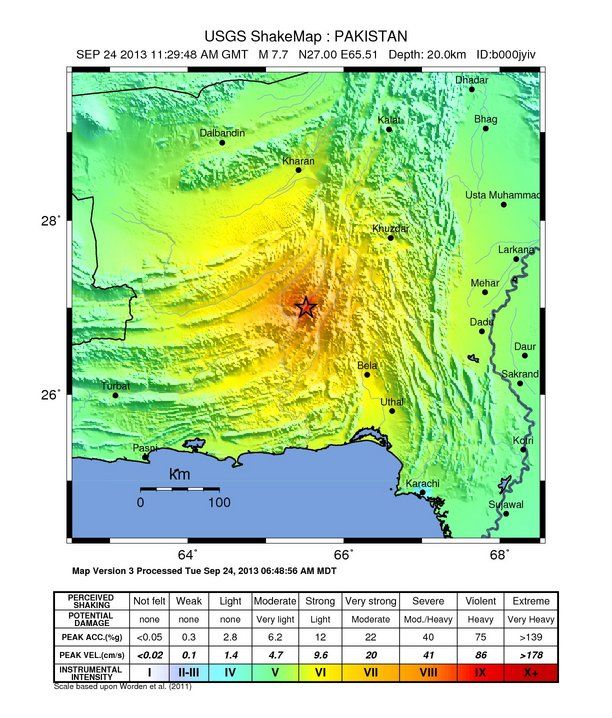
Strong Earthquake Strikes Pakistan, Dozens Killed

A large earthquake, with a magnitude of 7.7, according to the U.S. Geological Survey, has struck Balochistan Province in the southern portion of Pakistan. The temblor has killed dozens, most of whom perished when mud brick buildings collapsed, according to news reports.
The earthquake occurred at a depth of 12.4 miles (20 kilometers), a relatively shallow earthquake. The epicenter was 41 miles (66 km) north-northeast of Awaran, Pakistan. The area is known to have a high risk of seismic activity, thanks to the collisions of the Indian and Eurasian tectonic plates, which are also responsible for building the mountain ranges of the area, such as the Himalayas and Hindu Kush.
USGS models estimate that hundreds of thousands of people experienced the shaking and put the likelihood of 1,000 to 10,000 fatalities at 35 percent, and the likelihood of 10,000 to 100,000 fatalities at 27 percent. "High casualties are probable and the disaster is likely widespread," the USGS page on the earthquake said.
The Pakistani newspaper Dawn reports that an official with Pakistan's Frontier Corps has confirmed at least 46 dead from the earthquake, including women and children. The earthquake was felt across the province, including Quetta, the provincial capital, and even as far away as New Delhi in India. Houses in Awaran and Changai were damaged, the paper reported.
Bodies were pulled from the Awaran bazaar and from villages in the area, the paper reported. "I fear more people are trapped inside the collapsed houses," Abdul Rasheed Baloch, the deputy comissioner of Awaran told Dawn.
Editor's note: This story was updated at 2:03 p.m. EDT. It will be further updated as more information becomes available.
Sign up for the Live Science daily newsletter now
Get the world’s most fascinating discoveries delivered straight to your inbox.

Andrea Thompson is an associate editor at Scientific American, where she covers sustainability, energy and the environment. Prior to that, she was a senior writer covering climate science at Climate Central and a reporter and editor at Live Science, where she primarily covered Earth science and the environment. She holds a graduate degree in science health and environmental reporting from New York University, as well as a bachelor of science and and masters of science in atmospheric chemistry from the Georgia Institute of Technology.
Most Popular




